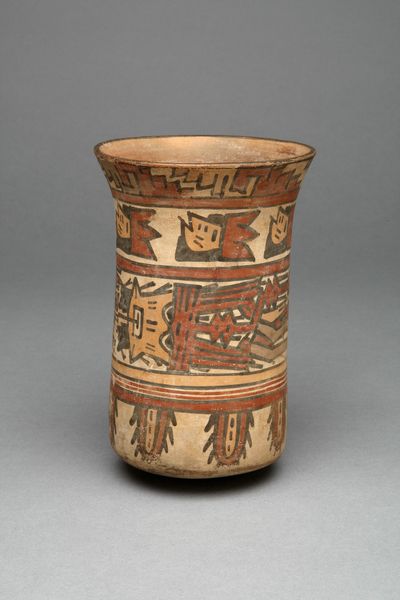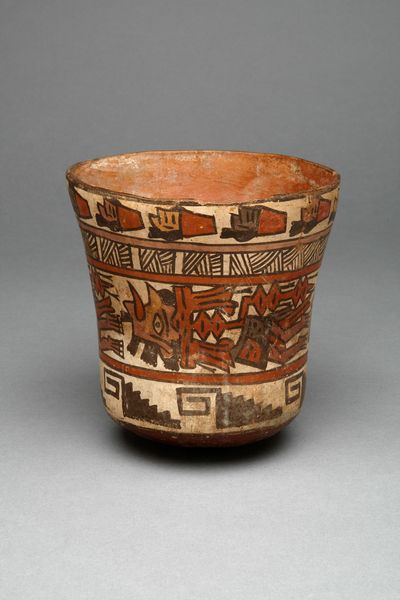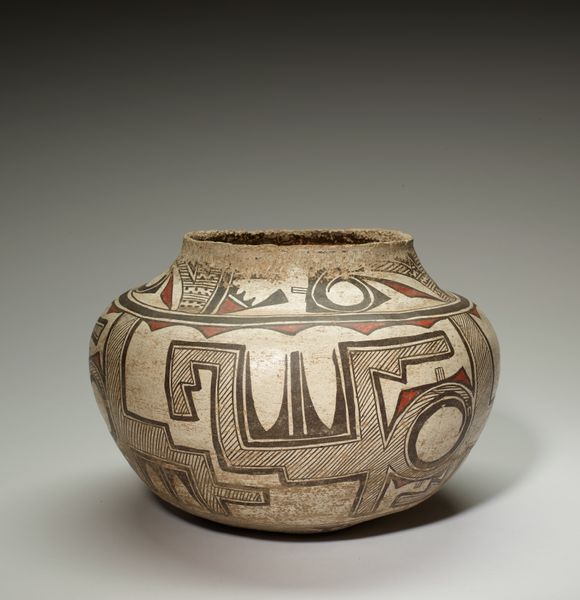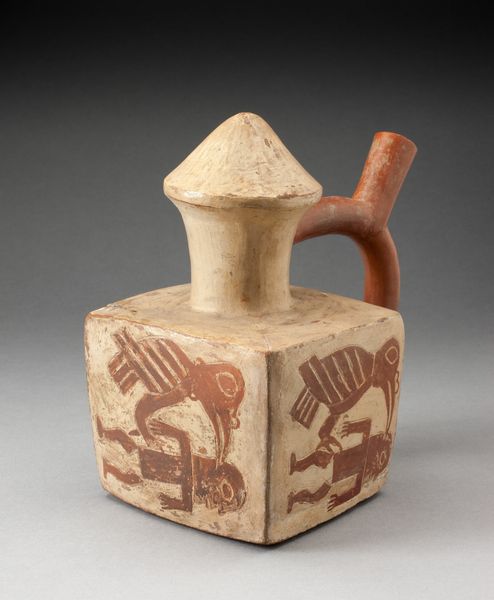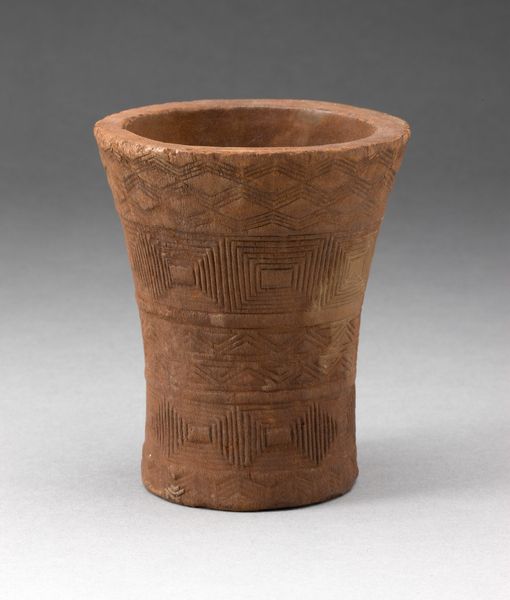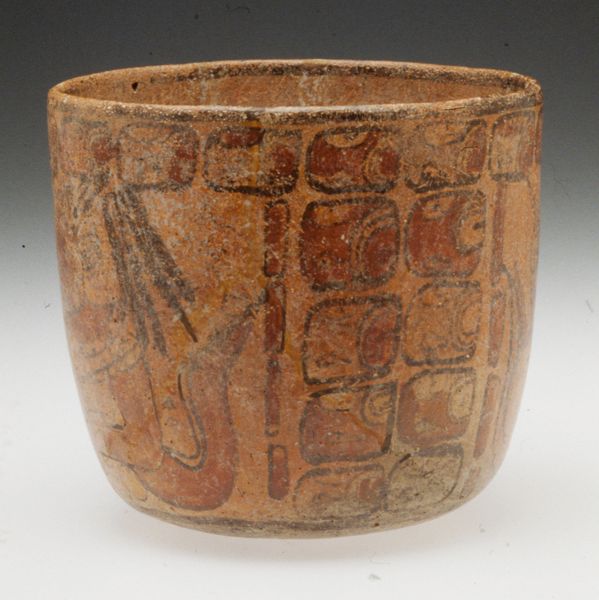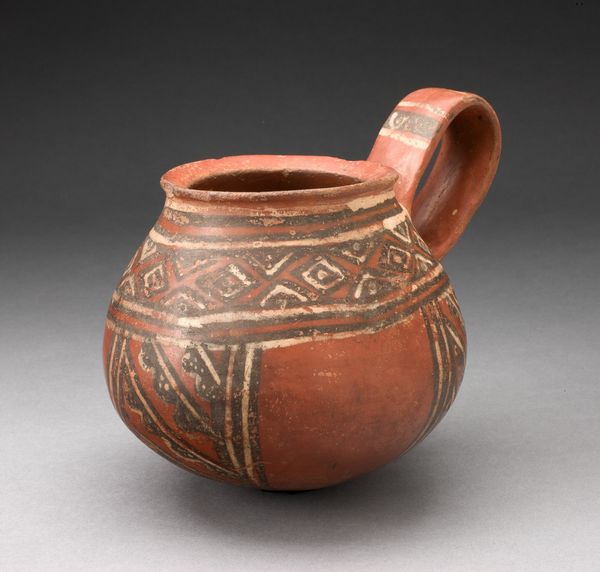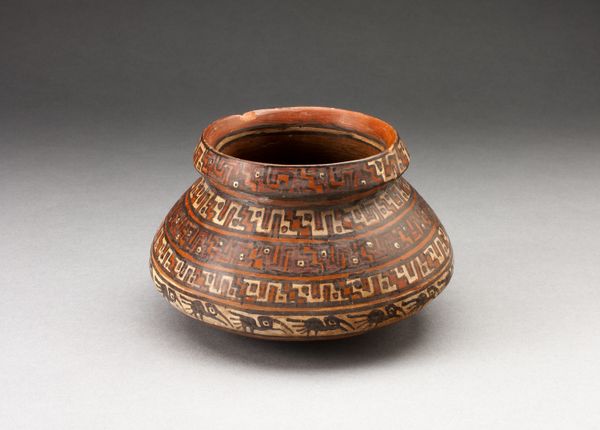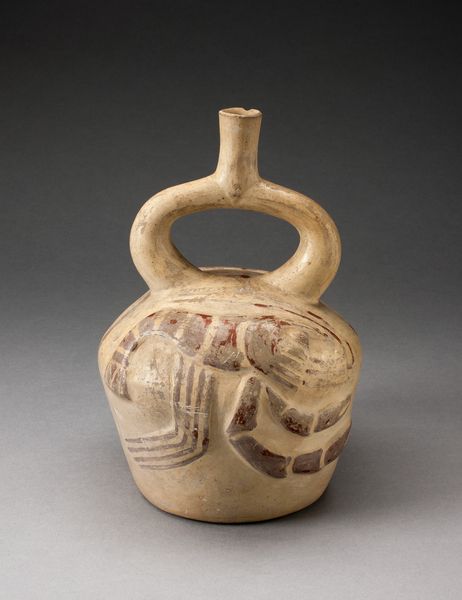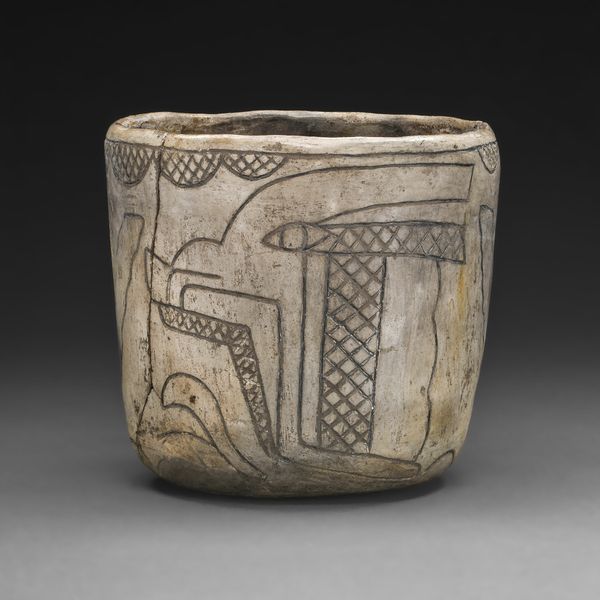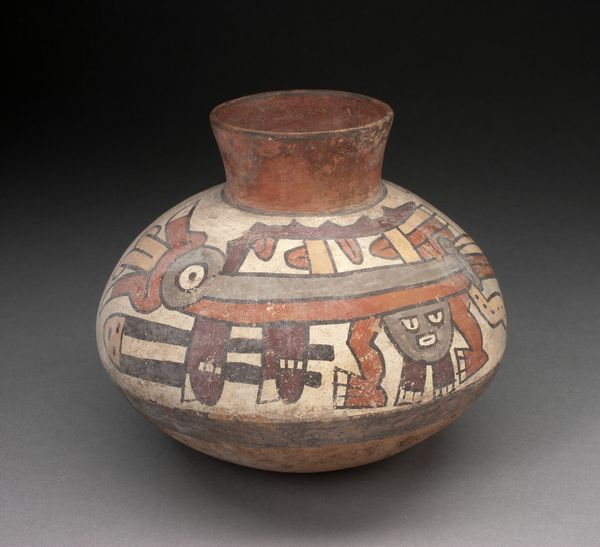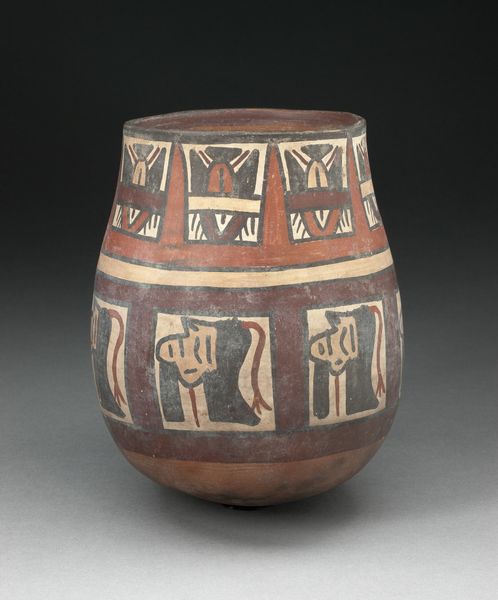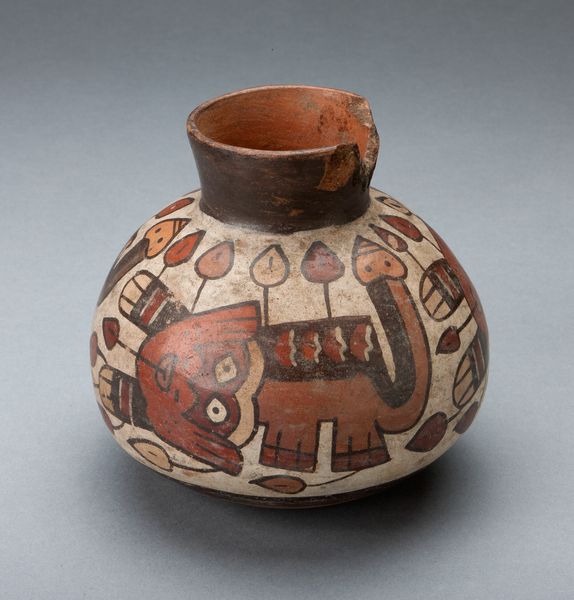
ceramic, sculpture
#
ceramic
#
geometric
#
sculpture
#
ceramic
#
indigenous-americas
Copyright: Public Domain
Curator: Before us, we have "Vessel," a Maya ceramic sculpture from around 601 to 900 AD, currently residing here at the Minneapolis Institute of Art. Editor: It’s austere, isn't it? This little ceramic bell of muted elegance – makes me want to hear the stories whispered into its opening, to taste whatever ancient concoction it once held. It looks haunted, but serenely so. Curator: Indeed. Its geometric motifs, rhythmically patterned across the surface, create a compelling visual structure. Note how the artist employed subtle shifts in relief to articulate complex relationships of form. Editor: Complex is right – those glyph-like shapes remind me of circuit boards or labyrinthine city plans viewed from above. It’s all connected, yet utterly indecipherable at first glance. Do you think the negative space here adds as much to the effect as the raised carving? Curator: Precisely. The negative space acts as a crucial counterpoint. These interplays create tension, drawing the viewer's eye across the vessel. Notice the band of horizontal registers just below the lip, contrasting with the vertical thrust of the central forms. It alludes to a rigorous formalism at play, not merely decorative whim. Editor: Or maybe a language that we no longer comprehend? A poem rendered in earth. The artist must have understood proportion so instinctively… holding raw potential and patiently coaxing the narrative from clay. How long must this have taken? Curator: That’s something we can only speculate on, of course. Its condition, however, suggests ritual or ceremonial usage, beyond purely functional considerations. Editor: I like that – so it wasn't simply a cup? What rituals, what entheogenic adventures may have been associated with it! Looking at the base there are slight imperfections, almost like ancient fingerprints… a trace of creation itself. That's lovely, knowing that connection remains. Curator: Yes, a material testament bridging vast temporal divides. In this "Vessel," we observe not just an object, but a complex embodiment of Mayan aesthetics and thought. Editor: Absolutely. It goes to show how much intention can imbue a seemingly simple form – silence speaking volumes across millennia.
Comments
No comments
Be the first to comment and join the conversation on the ultimate creative platform.
